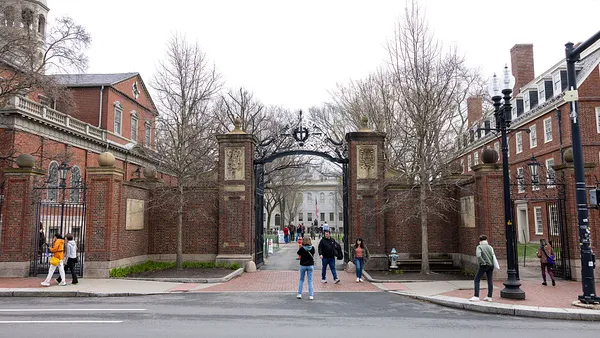Dive Brief:
- California's two- and four-year public colleges could get a boost from the 2019-20 state budget proposed by its new governor, Gavin Newsom, but they will also be required to freeze tuition.
- The University of California System, which has 10 campuses, would get a 3% year-over-year increase in total funds; the 23-campus California State University will get a 6.2% increase in total funds; and the California Community Colleges will get a 2.6% raise across its 115 locations.
- Newsom's budget includes two free years of community college, key to his campaign platform, as well as additional funds for Cal State colleges for what the budget says is "their critical importance in preparing the workforce of California."
Dive Insight:
The budget also allocates funds to hire more mental health counselors, help students with some credits to complete their degrees, improve food insecurity, add childcare centers on some campuses and provide legal services for undocumented students and their families.
However, it falls short of meeting the full needs of the state's primary financial aid program, EdSource reports. The budget raises Cal Grant funding by nearly $200 million, which includes grants of up to $6,000 for some 29,000 students with dependents.
While that represents a 4,000-student increase in Cal Grant recipients, more than 20,000 eligible students are still cut out of the funding, EdSource notes, due to restrictions in the number of awards granted to those who enter college more than a year after graduating from high school.
In a joint statement, student representatives from the state's three public college systems, said the budget "does not go nearly far enough in addressing the systemic issues" related to college affordability for low-income students. "The stresses of living day to day and paycheck to paycheck prevent our neediest students from fully realizing the benefits of our quality higher education institutions in California," they wrote.
The groups call on the state to address costs beyond tuition, offer more aid and provide more flexibility for students who want to take summer courses in order to graduate more quickly.
Some Cal Grants afford students a small amount for living expenses, transportation and books, but like most state or institutional grants they cover relatively few non-tuition costs. Advocates of expanding awards beyond tuition say many students with the greatest need already have much of their tuition covered by federal aid.
While free college programs aim to lower the barrier to entry for higher ed and keep students in the local workforce after graduation, they are often last-dollar programs that leave expenses unmet that could make college attendance cost-prohibitive.
Covering those costs will be a challenge as state funding remains low. California is one of only four states to increase inflation-adjusted per-student funding since the Great Recession, and by just 0.3%.













